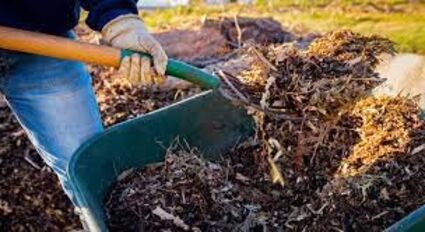A Gardeners Best Friend: Mulch (Part 1)
Last updated 6/14/2022 at 4:05pm
During our monthly Master Gardener meeting, I invited a fellow Master Gardener, to drop by my home Friday morning to pick nectarines from my two trees. She arrived at our agreed upon time of 9 am, as I was watering plants in and around flower beds and vegetable gardens while listening to mellow music playing in the background. This is the way I prefer to water my plants, hundreds of them. While watering two thoughts continued running through my mind; how hot it was this time of the morning, and it's time to add mulch to each of the flower and vegetable beds!
Summer's here folks, so no matter the time of day, stay hydrated and take numerous breaks. If possible, schedule yard work and gardening tasks during the cooler times of the day; early to mid-morning and late evening. We are in for long, hot, and unfortunately very dry summer so incorporating mulch into flower and vegetable beds, will aide plants, especially when it's extremely hot, or when there is little to no rain fall. Adding mulch around plants keeps their root zone cool, minimizing heat stress, and retaining moisture. It reduces the number of weeds by inhibiting weed seed germination, and slowly decomposes adding needed nutrients to the soil.
So, before I get carried away discussing mulch, let me begin by describing what mulch is and why as gardeners, we should be using it. Mulch is cover or layer of material placed around the base of plants to control weeds and retain moisture in the soil. It creates an insulating layer between the soil and summer's heat or winter's cold. Organic mulch can be composed of many different materials, such as: compost, leaves, grass clippings, tree bark, hay, wood chips, sawdust, straw, pine needles, cardboard, newspaper (not the glossy pages). Inorganic mulch is made up of synthetic material, such as black plastic, fabric, or rubber.
How do you decide which type of mulch is right for you? Choosing the right type of mulch to use in your garden doesn't have to be a difficult decision. Let me assist you by highlighting the pros and cons of the more common mulches sold and used today, beginning with organic mulches.
Compost is by far the best mulch to use. It continuously nourishes plants by adding nitrogen and carbon to the soil as it decomposes. Adding a 3-to-5-inch layer of compost will keep weed seeds from germinating and retain soil moisture while keeping plants roots cooler during summers heat.
Hardwood mulch is mostly recycled wood by-products. They are typically coarsely shredded and last for many months while remaining in place. Hardwood mulch decays faster than cedar mulch, allowing nutrients to be released into the soil, enriching the soil while suppressing weeds. Hardwood mulch compacts well, working well on uneven surfaces. However, the compaction sometimes can repel water and the soil beneath can remain dry, resulting in microorganisms competing with plants for nutrients.
Cedar mulch is coarsely shredded wood, which is stingy, and lasts longer than hardwood mulch. Twice ground cedar mulch is finely ground and will compost faster. Cedar has natural golden-brown color which looks exceptional around plants. Cedar contains oils which have a wonderful aroma that can deter harmful and beneficial insects alike. Its light color helps repel heat unlike darker mulches, keeping shallow roots from overheating. The rich golden color will fade quickly, leaving gray wood slivers in the garden for many months, until it breaks down. Fresh cedar mulch is known to rob the soil of nitrogen which is a crucial element for plants. The long-lived nature of cedar means it's not adding nutrients, so more frequent fertilizing will be necessary.
Pine Straw is great for plants such as azaleas, gardenias, camellias, blueberries, hydrangeas, and evergreen shrub beds. It is easy to collect beneath pine trees, as it is light, easy to work with, lasts longer than many other types of mulch and does well holding in soil moisture. Pine Straw is not effective as a weed barrier, as the needles are thin and light, unless piled on very thick. This means it can become a welcoming habitat for pests and insects (good and bad), while also attracting snakes in search of food. Pine straw is highly combustible and takes several years to decompose. Gardeners, please do not use this mulch next to your homes, it is a fire hazard.
Dyed mulch (Red, Black, or Brown) is attractive initially, but they do not break down enriching the soil. The dye leaches into the soil, discoloring it. Contaminates, such as chromium, copper, and arsenic used to create the mulch may kill beneficial soil bacteria, insects, earthworms and sometimes the plants themselves. Also note, runoff from the gardens can seep into groundwater or drain into surface water affecting aquatic environments.
If you have specific gardening questions or need more information, contact the Orange County Master Gardeners Helpline: (409) 882-7010 or visit our website: https://txmg.org/orange, Facebook: Orange County Texas Master Gardeners Association or Email: [email protected].







Reader Comments(0)